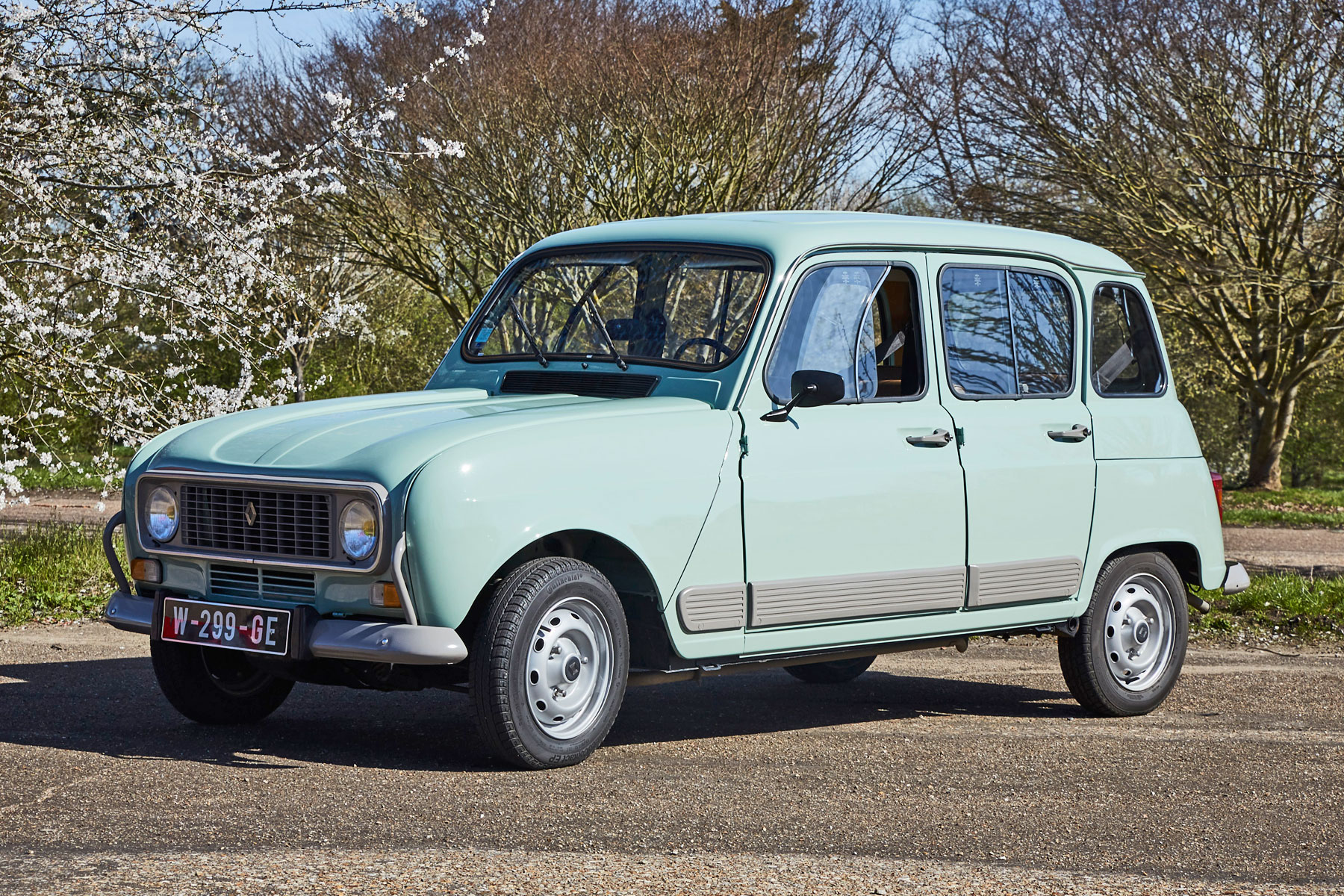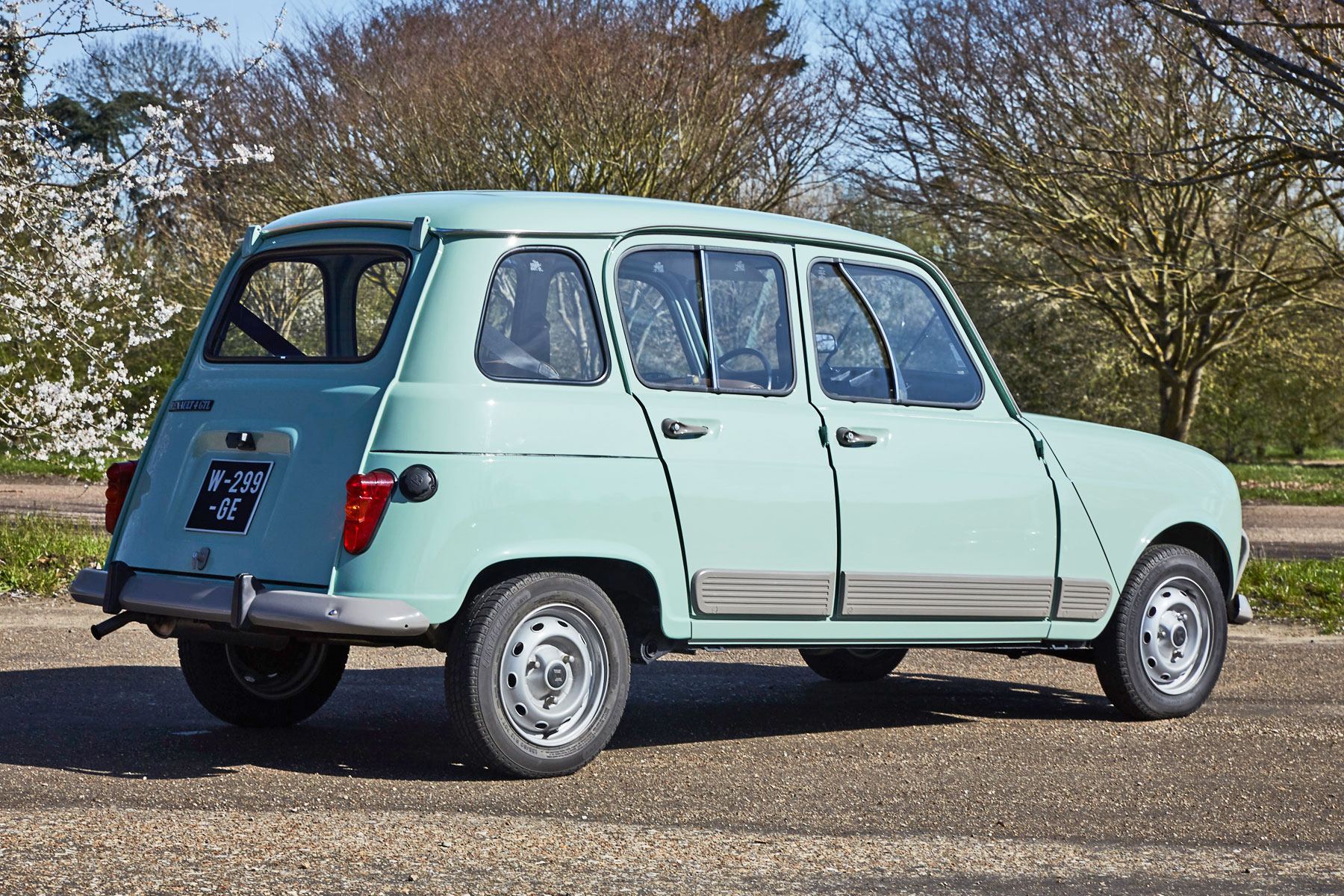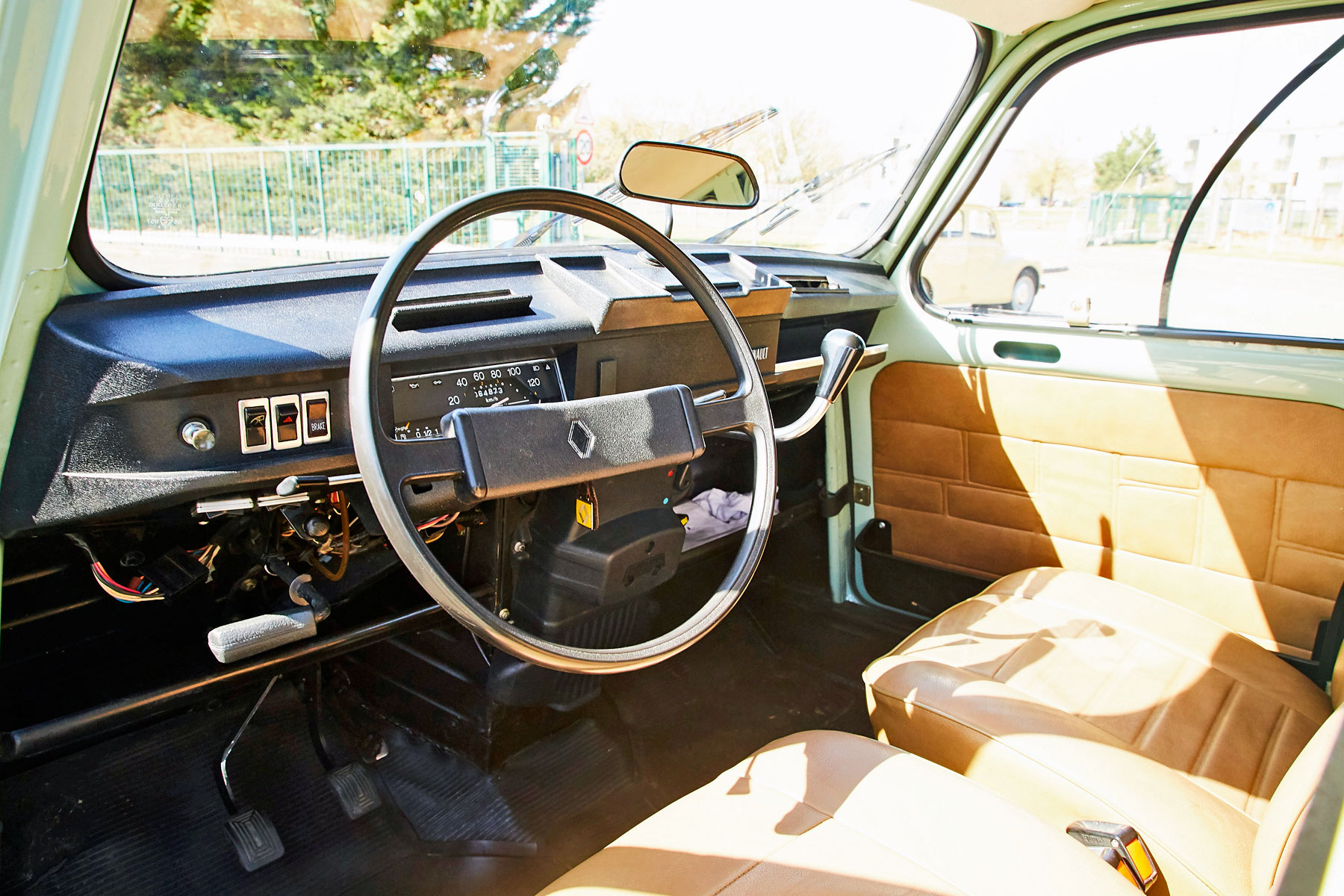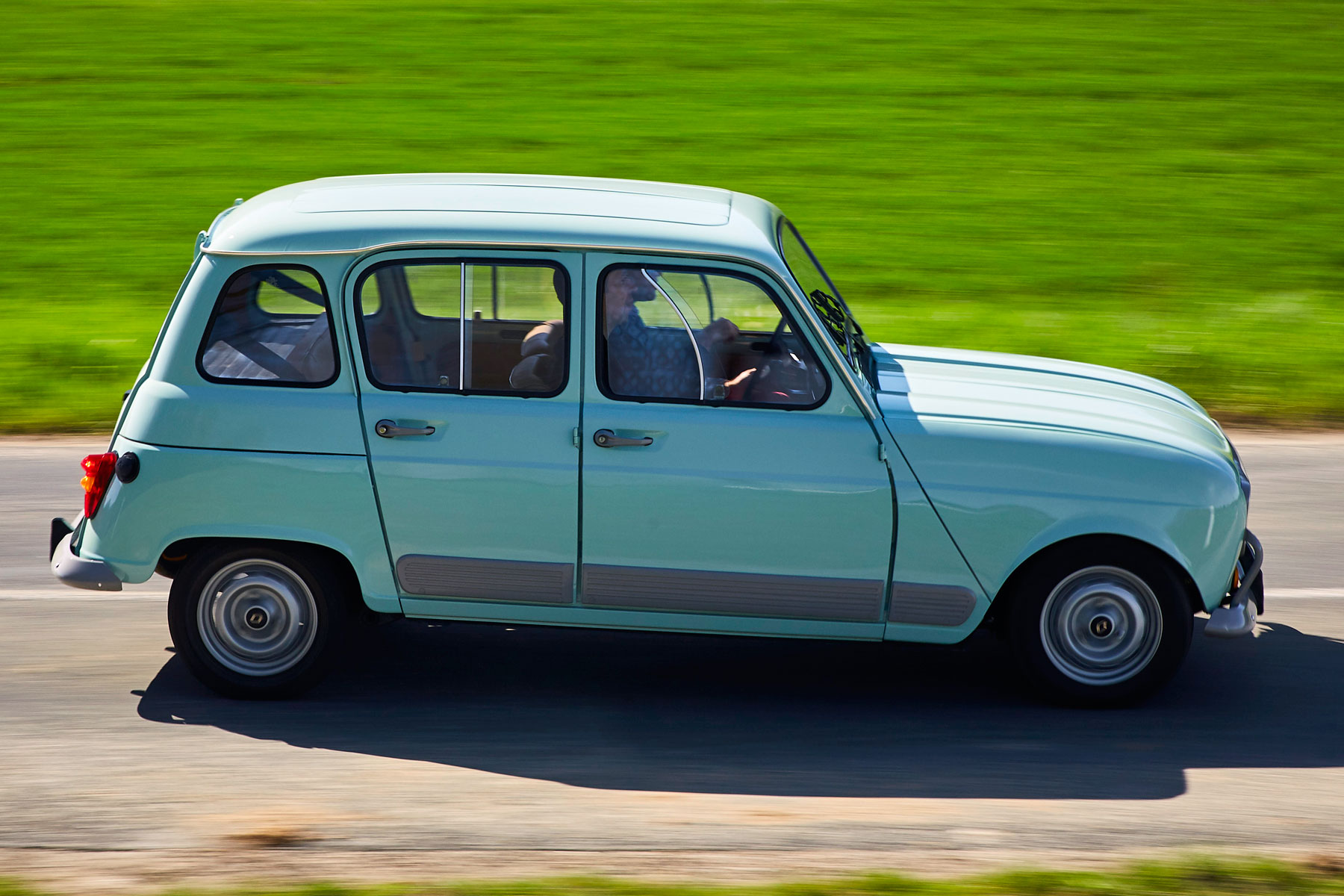A car that can take the family on holiday, be driven as a work vehicle and won’t cost a fortune to run. That was the general idea behind the Renault 4 when it was launched in 1961.
Production continued right up until 1992, and you still occasionally spot them in rural areas of France. Just like a Citroen 2CV, a French holiday isn’t complete without catching sight of a well-worn Renault 4.
This immaculate example is a higher-spec Renault 4 GTL. Part of the company’s huge heritage collection, it was first registered in 1980 and has led a pampered life since then.
Being a GTL, power comes from the same water-cooled 1,108cc engine as the Renault 6 TL and Estafette van. It can be identified as a GTL by its grey grille, bumpers and plastic cladding running along the bottom of the doors.
What’s it like to drive?

The 4 was the Renault’s first front-wheel-drive car (although the technology had previously been introduced with the Estafette). Its focus was on efficiency and practicality, rather than performance or driver engagement.
It’s surprising, then, just how much fun the Renault 4 is to drive. The gear lever protrudes from the dash in an unconventional manner, not dissimilar to a seventh-gen Honda Civic. This is out of necessity more than anything – it links to a rod that runs over the top of the engine before dropping down to the transmission at the front of the car.
While it seems bizarre at first, it’s a really sweet gearbox to use. By this stage in Renault 4 production, it had a four-speed ‘box with synchromesh on all ratios. Finding gears is easy once you’re used to the strange position of the lever, and the change feels wonderfully precise.

Although it’s certainly not quick (an output of just 34hp is sufficient for a top speed of 75mph), the Renault can keep pace with today’s traffic. The ride quality – a hallmark of old French cars – means you don’t slow down for potholes, while the brakes are adequate, if a little heart-stopping compared to any modern vehicle.
Things can get a trifle concerning in the corners as well, where it approaches near-2CV levels of lean.
The light steering also means you’re not entirely convinced it’ll make it around bends without running out of road. Perhaps that’s why Renault 4s are such a common sight in French fields…
Tell me about buying one

Although you might Renault 4s in daily use in France, they’re considerably harder to find here in the UK – especially in good condition. We’d favour a later model, like the one we’ve driven here, simply for its extra power and four-speed synchromesh gearbox.
Prices depend on condition more than age or anything else. While you’ll pay more than you once would, they’re not extortionately expensive (or indeed as pricey as the Citroen 2CV). Expect to pay upwards of £4,000 for a tidy, usable example.
As with many old cars, rust is the biggest concern. It’s particularly prominent around the rear suspension mountings, so inspect these carefully. If it’s been repaired (and it probably has at some point), satisfy yourself that it’s been done properly rather than a quick patch to get it through an MOT test.
Another rust-spot to watch out for is inside the rear doors, while all four corners of the floorpan can also rot (but repairs are relatively affordable). Panels can also corrode, but replacements are available from Renault.
Mechanically, Renault 4s are pretty robust, while the interior is equally hard-wearing. Get one that’s structurally solid and anything else can be fixed fairly cheaply.
Renault 4 GTL: Verdict

The Renault 4 is a bargain of the classic car world. Utterly charming to drive, it’s incredible that you can buy such an iconic vehicle in great condition for less than £5,000. Compare that with how much an original Mini of a similar vintage would cost – and Minis are a lot more common, certainly here in the UK.
Although we’d be reluctant to drive an R4 every day – and it’s certainly not a car for long motorway journeys – it’s perfectly pleasant to pootle around in, while the interior is functional and endearing.
Finding a good one may take a little time, but you haven’t missed the boat. And running costs will be affordable, unless you get one with a chassis that resembles a colander…
ALSO READ:
Remembering the fabulous yet forgotten Renault 16



[…] love affair with the hatchback began when the Renault 4 in 1961. Its wide-opening tailgate presented estate-like loading potential, and more than eight […]
I owned one for 3 years in rural Zambia in the 1970s and drove it all over the country, even on a trip to Malawi fully loaded with a heavy passenger. Also many cross country fishing trips. It ran beautifully over the corrugated dirt roads. Much better than my friends Maxi which fell to bits!